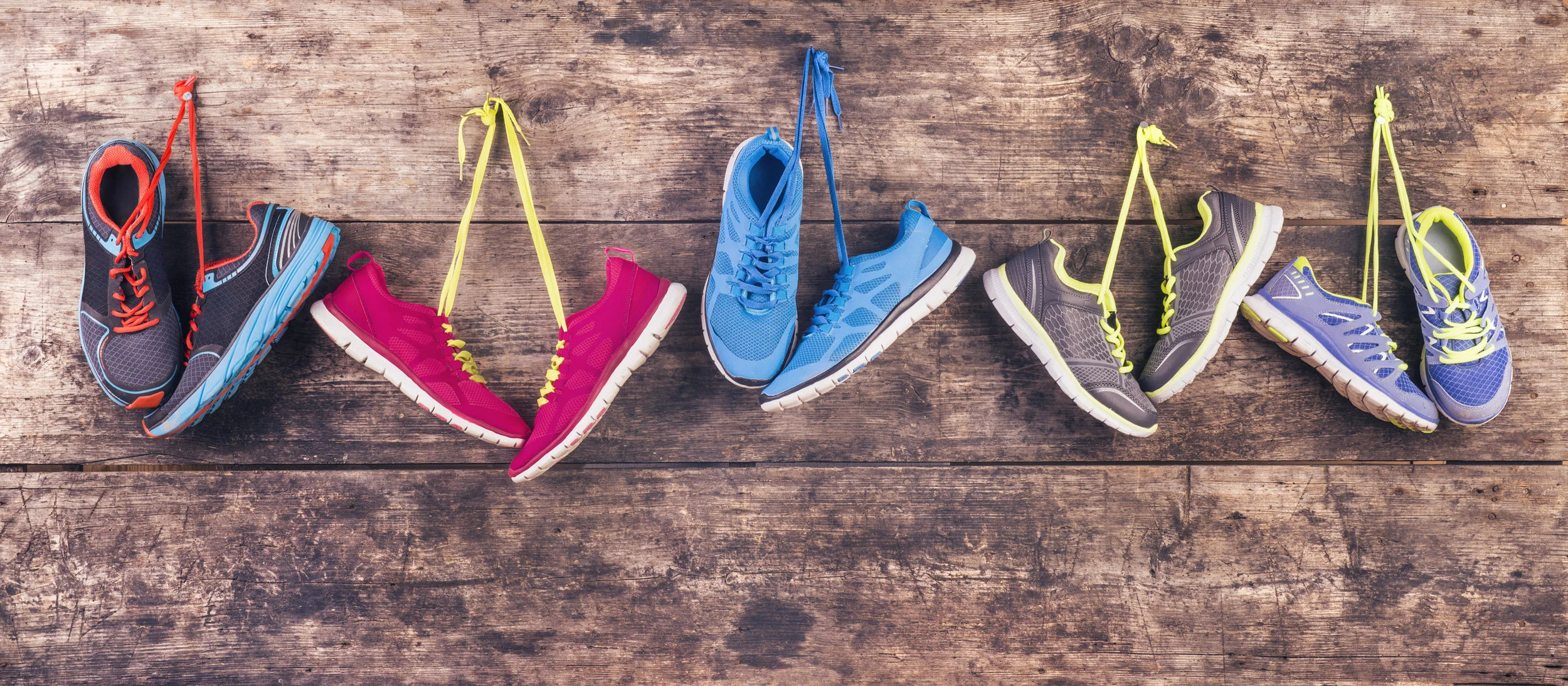Running footwear: Update from a physical therapist
Running footwear: what you need to know.
Dr. Karen Lovely, PT, DPT is one of our amazing physical therapists, and she spoke about footwear and running gait (form) during our recent workshop for preventing running injuries. This is what Karen has to say about footwear:
Want a running eval? Contact us.
Have you ever walked into the running store and been overwhelmed by the number of shoes on the shelf to select from? Which style? Which color? Do I need extra arch support? Am I flat footed? What does this mean? Wait, I should run barefoot?
Keep it simple: Choose your shoe based off of comfort
If you dig into the research, you will actually find conflicting evidence regarding the benefits of matching running shoes to the shape of the static foot. Whether you are flat footed (a pronator), have a high arch (a supinator), or have a neutral arch, your risk of injury does not vary across shoes with differing arch support. Selecting a shoe that is comfortable on your foot with walking and jogging is the best indicator for success.
"Learn the forefoot strike."
Karen Lovely, PT, DPT
What about running barefoot?
Barefoot running adds another layer of confusion to the process of selecting running shoes. Running barefoot isn’t about the shoe…well, I guess there is no shoe involved if you are truly barefoot. Running barefoot or with a minimalist shoe is more about gait mechanics. Imagine running barefoot and striking with your heel. It makes me hurt to even think about it. Barefoot running and the minimalist shoe are one of the best ways to learn the forefoot strike with running. Why run with a forefoot strike? While the ground reaction forces through the ankle, knee, and hip are reduced with forefoot running, reducing the risk of stress related injuries.
Considering your injury history is also important!
Don’t forget to also think through your personal injury history. There is not a one size fits all when it comes to running shoes and gait mechanics. If you are recovering from an Achilles tendon injury, immediately trying to run with the forefoot strike may actually result in a bigger problem, as forefoot running increases the load across the calf muscles and Achilles. Shoes and gait mechanics do not solve every problem – having proper core stability, glute strength, balance, and controlled movements will make the biggest difference in injury prevention. If you have any questions, reach out to your physical therapist to assess your mobility, strength, motor control, and mechanics!


